After doing all types of sewing stitches one question keeps popping in my mind. Which is what is the strongest stitch by hand?
🤔 Instead of rubbing my head I decide to do some research about it.
And I found out
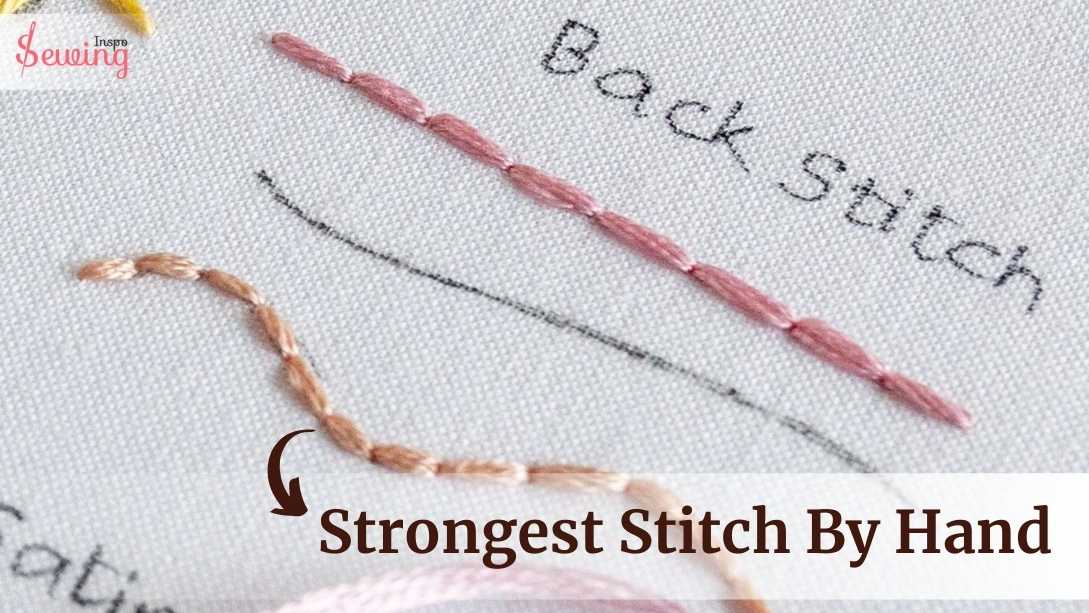
Strongest Stitch
The backstitch is the strongest stitch by hand. Because the Mechanism of this stitch offers the strongest security of fabric.
But why back stitch is better than another stitch? Excited to know? Then let’s dig into the article.
What You Will Learn about strong hand stitch:
- Mechanism for strongest stitch
Table of Contents
What Is The Strongest Stitch By Hand And Why?

Backstitch is the strongest hand stitch.
But, there is a lot of debate about the strongest stitch. And to be honest most of the stitches are strongest. For example:
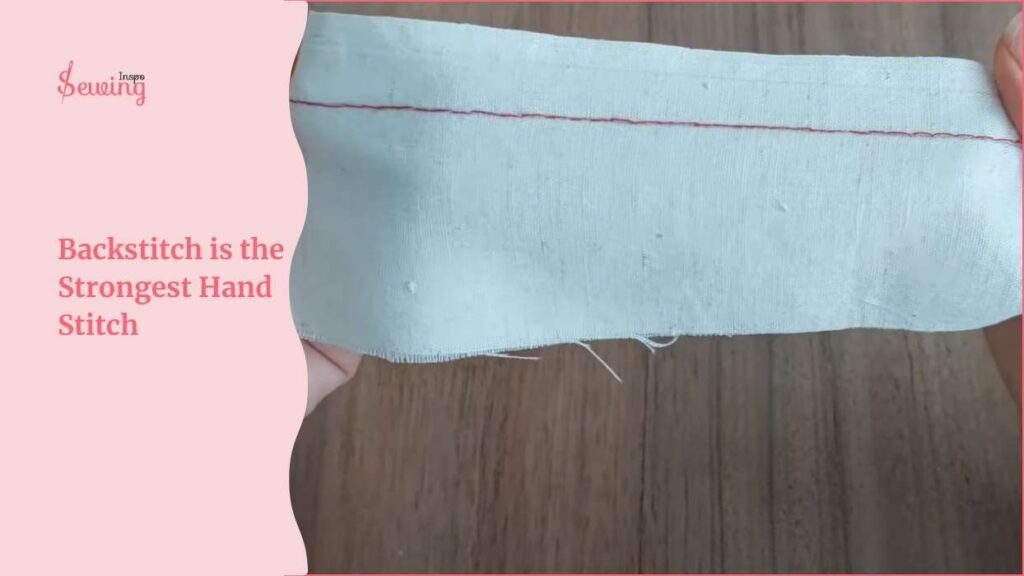
| Stitch Type | Strengths | What Makes it Strong |
| Backstitch | Very strong and durable. | Overlapping stitches create a continuous, tight stronger seam that holds fabric together securely. |
| Whipstitch | Good for joining two pieces of fabric at the edge. | A continuous loop around the fabric edges helps prevent fraying and holds the pieces together. |
| Blanket Stitch | Adds strength to the fabric edge. | Looping straight stitch helps to prevent fraying and can reinforce the edge of the fabric. |
| Overcast Stitch | Great for finishing raw edges and keeping edges from fraying. | Continuous looping helps to prevent fraying and can provide some reinforcement. |
| Cross Stitch | Decorative and creates a grid pattern. | The intersecting stitches provide some reinforcement, especially in multiple layers. |
| Ladder Stitch | Good for hidden sewing seams and repairs. | The Zigzag pattern provides a secure hold while being hidden within the layers of fabric. |

So, what do you understand from it? 😊
The back stitch is the strongest among all kinds of stitches! 😎 That’s why it gets the ‘strongest stitch’ name
Why Back Stitch Is The Strongest Stitch?
The backstitch is considered the strongest hand stitch because of its structure. That’s why back stitch is used to secure things for any sewing project. Each current stitch overlaps with the previous one, creating a continuous line that doesn’t easily come undone. This overlap spreads the tension evenly, reducing strain on any single point.
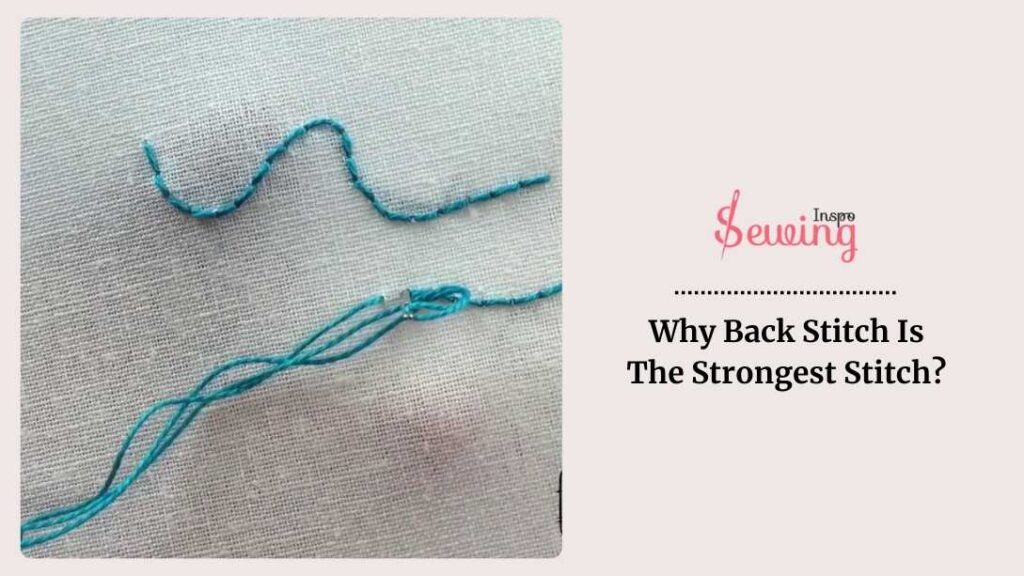
Wait! There is more-
Backstitches can also be made tight and close together, making a strong seam that holds fabric securely. And you can make back stitch long as as you want. By looping back on itself, the backstitch adds extra reinforcement. These features make the backstitch ideal for stitch for seams that need to be strong and durable.
All of those criteria make backstitch strong hand stitch. That’s why this is also a perfect stitch to hand stitch like a sewing machine.
How To Make More Durable Backstitch?
To make a more durable backstitch, use a strong, high-quality polyester thread that suits your fabric type and your sewing machines, stitching pattern. And make sure to take right amount of thread for back stitch. Keep your row of stitches even and tight, pulling the thread taut without puckering the fabric.
Consider doubling the thread or using a thicker thread for added strength. Also, make sure to backstitch over the initial and final stitches to secure the seam’s ends, preventing unraveling. That way you can even make the strongest stitch pattern.

Strongest Stitch By Hand
The back stitch is the strongest by hand, but that doesn’t mean the other stitch is good for nothing. Other basic stitches also pretty strongly hold fabric or embroidery stitches. Such as:
Let’s say cross stitch. There is a huge difference cross stitch vs back stitch. People tend to think cross stitch is the more durable cause of its looks. But is it true? 🤔
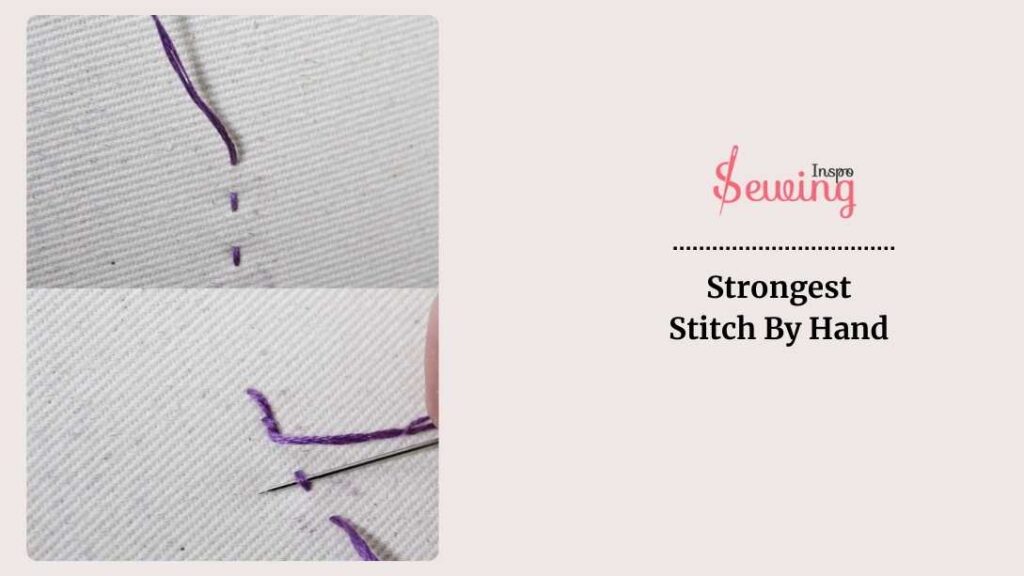
See,
Cross stitch can’t be strong sewing stitch. The cross stitch is highly durable creating a tight, interlocking stitch on both sides of the fabric that resists unraveling for decorative stitches. Why?
Well, this durability comes from the way the strands of thread intersect, forming a stable structure that holds up well under tension. The wave structure creates a grid shape which helps to keep embroidery and fabric together.
But yes you can sometimes do back stitch in cross stitch to make embroidery stand out.
And then
The blanket stitch, with its flexibility, offers strength and is ideal for seams that need to stretch and move. This will create the strongest sewing stitch.


Its strength lies in its adaptability, allowing the fabric to flex without breaking the stitch, making it perfect for areas subject to movement. It creates a durable edge that keeps 2 fabrics together strongly and prevents wear & tear.

On the other hand,
The saddle stitch provides strength by wrapping the fabric’s edge in thread, preventing fraying and ensuring durability. That’s the purpose of back stitch.
The wrapping technique used in saddle stitching encloses the edge, which not only reinforces the seam but also protects it from wear and tear. But if you put back stitch vs saddle stitch battle it is most likely to fail. 😜
So, yes the strongest hand sewing stitch is back stitch.
Because it involves stitching backward along the line of the fabric, with each stitch overlapping the previous one. This creates a continuous line of basic hand stitches and each stitch is close to the other. Which provide strength and durability.

The moral of the story is-
- Cross stitch offers 10% strength to the fabric.😊
- Blanket stitch offers 20% strength to hold 2 fabrics together. 😎
- Saddle stitch gives 30% strength to joint 2 leather together. 😁
- Back stitch offers 40% strength to any kind of fabric/ embroidery work.💪

So, it’s safe to say-
Back stitch is the strongest stitch by hand.
How To Do A Strong Stitch By Hand?
Now you know Backstitch is the strongest of all.

So to do a back stitch, begin by threading a sewing needle and simply knot the end of the thread. Insert the embroidery needle from the back of the fabric pieces to the front. Move the needle about a ¼ inch forward, then push it back through the fabric.
Bring the needle up a quarter inch ahead of the last loss stitch. Then push it back down to the end of the previous common stitch, creating a continuous line of overlapping stitches.
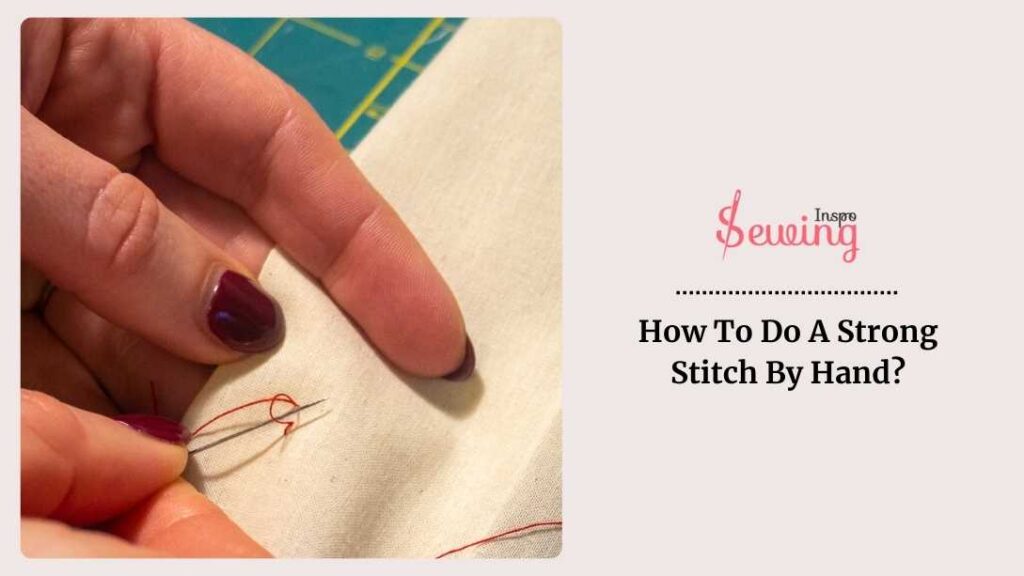
Repeat this process to form a durable, secure seam that resists unraveling. And then end it with a tie of back stitch then cut the extra loops of thread with sharp scissors.
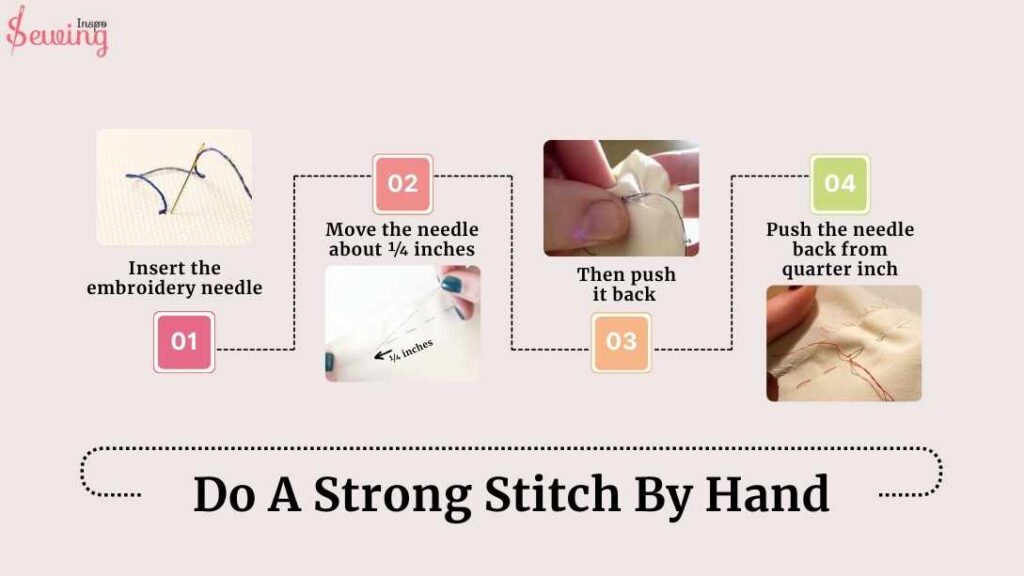
And if you want a detailed step by step process then read out our how to do back stitch article.
Strongest Hand Stitch For Clothes
The strongest hand stitch for clothes is the backstitch. It’s not the strongest for an edge. It also serves as its strongest feature on clothes.
Just loop back a bit with each stitch, and you’re good to go!
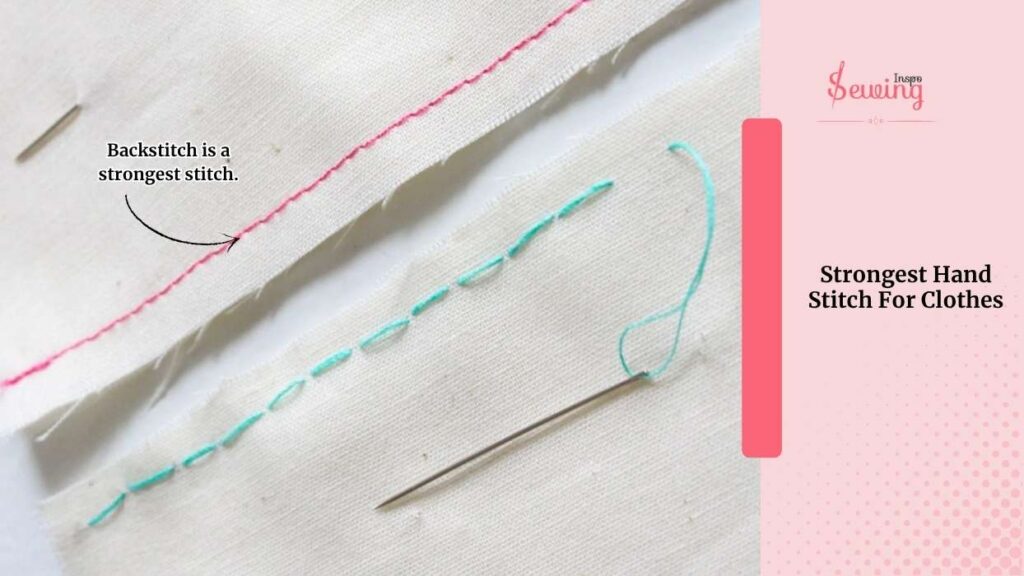
Strongest Stitch Pattern By Hand
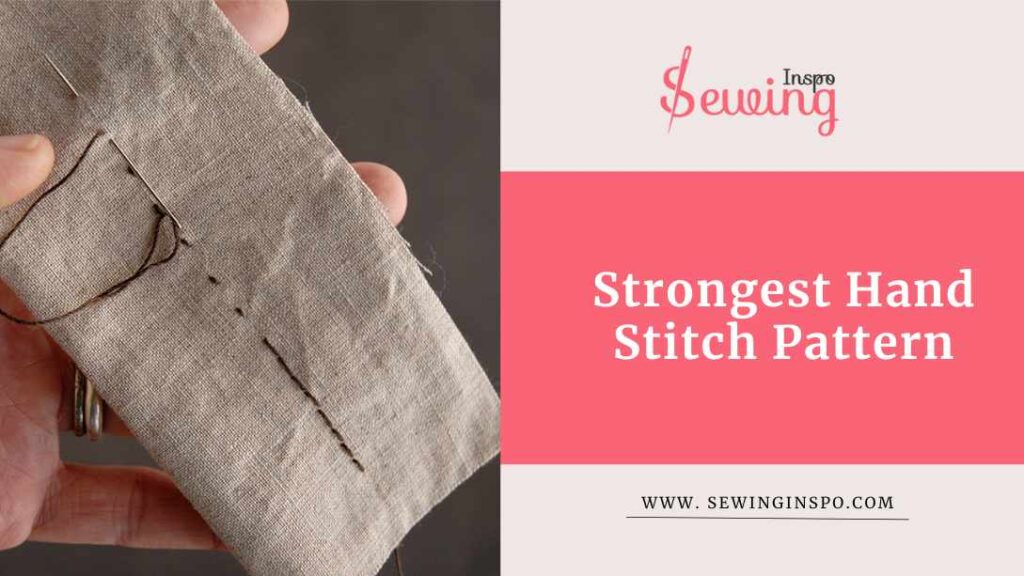
Just because the back stitch is the strongest that doesn’t mean its only work is to secure that. 😏
It is also helpful to create beautiful back stitch patterns. Here is a few of my work:
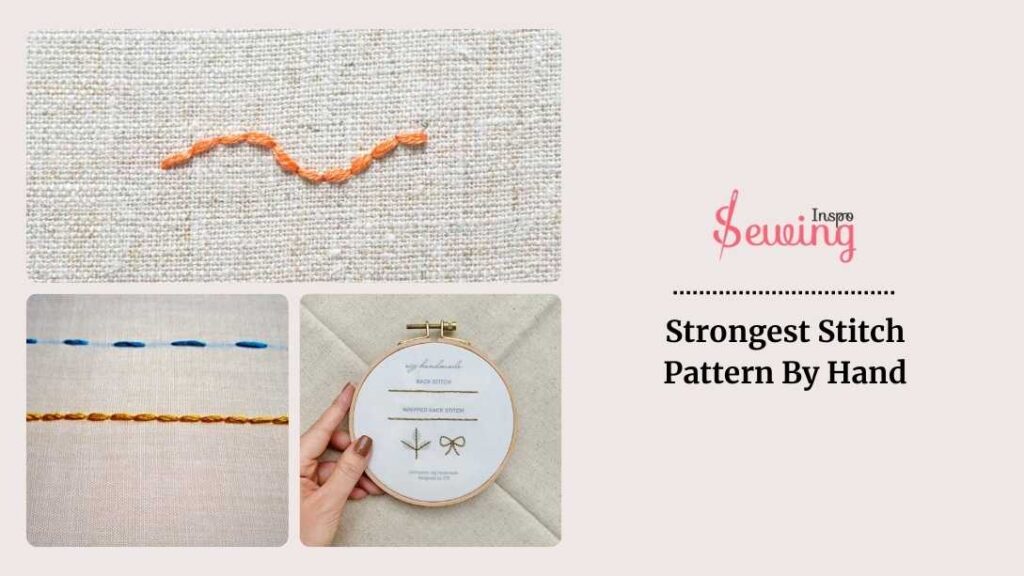
Making the strongest hand stitch pattern sounds difficult, but it is not. Once you get the technique, you can never stop doing it, just like I did. Have a look at my more work-
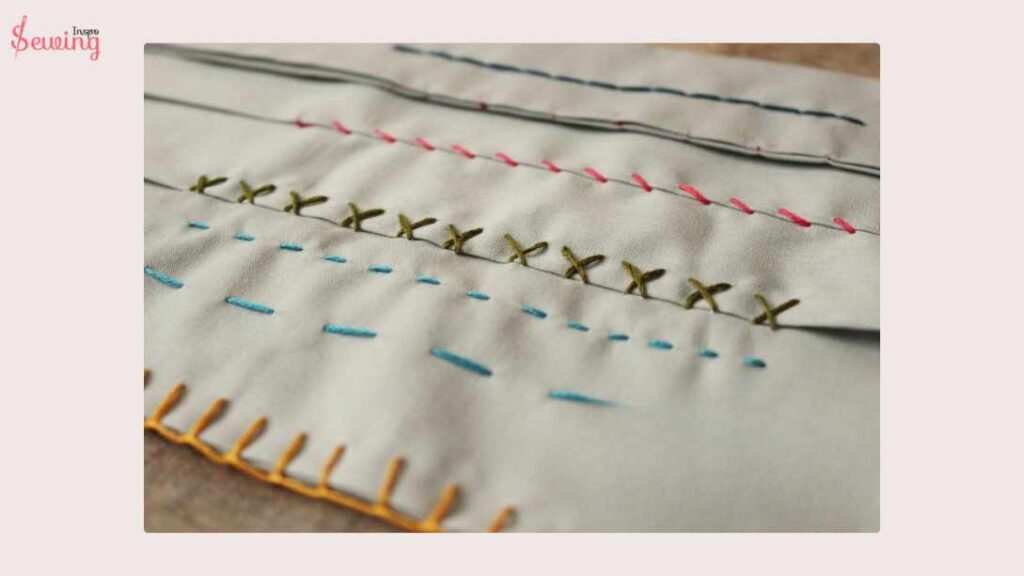
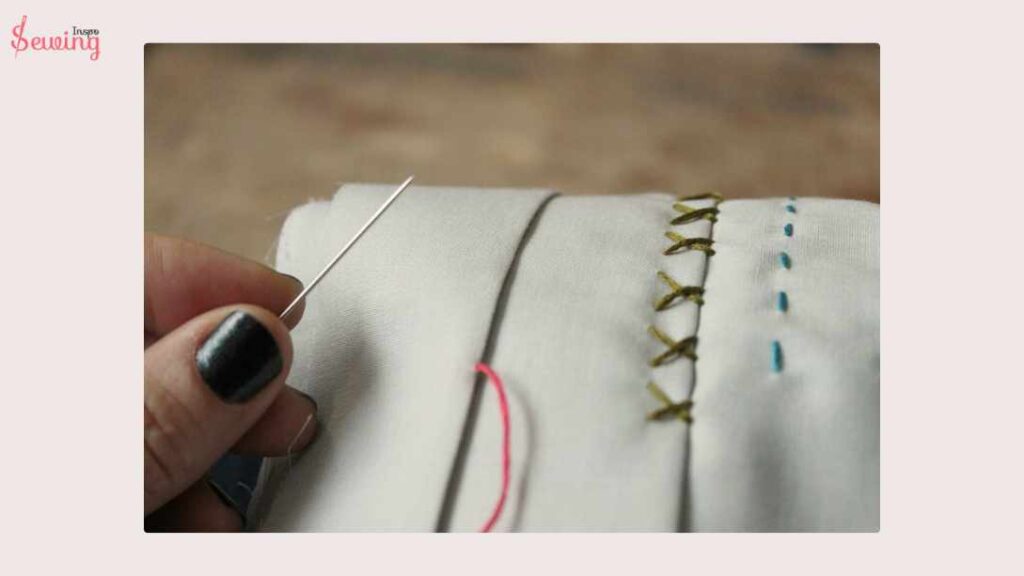

What Is The Strongest Stitch For Repair?
Again, the strongest stitch for repair is the backstitch. No matter where you want to do the strongest stitch, the answer to strong hand stitch is backstitch. Why?
Well,

It’s perfect for high-stress areas like the seams of jeans, bags, or any thick fabric like leather. And if you really want to level up the strength, try double-threading your needle. That’ll give it even more durability. That’s Why back stitch called most secure hand stitch. That’s why it’s mostly used to end the stitch.
So, when things start to fall apart, backstitch will hold you back.
Strongest Hand Stitch For Seams
When you want to ensure your seams are strong and durable, especially for areas that will endure a lot of stress (like armholes, side seams, or even on heavier fabrics). Then the Backstitch is your go-to hand stitch.
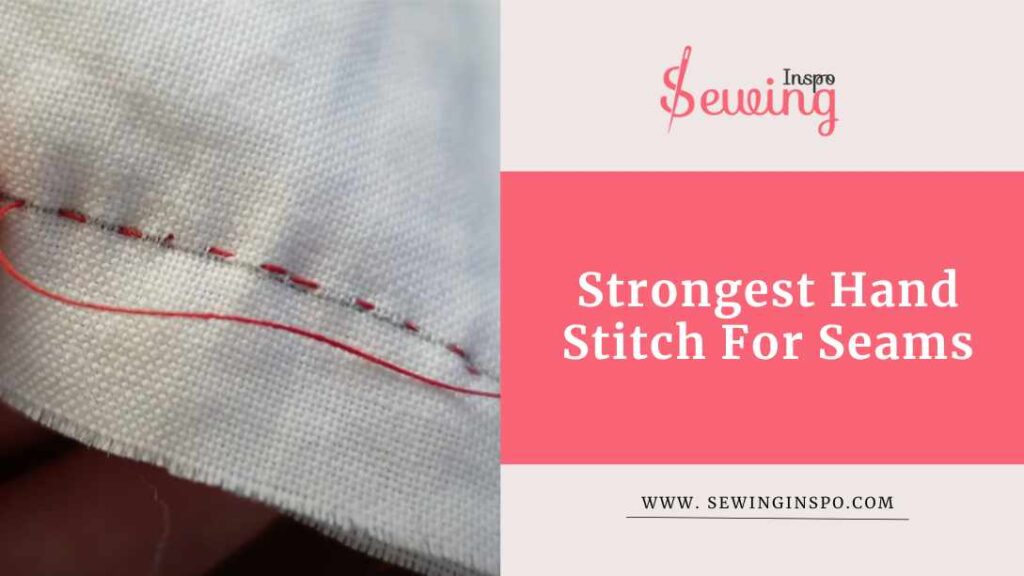
It’s widely known as one of the strongest hand stitches because it creates a tight, secure seam that won’t easily come apart.
My Strongest Hand Stitch Video Tutorial
Frequently Asked Questions (FAQ’s)
Can The Backstitch Be Used On All Types Of Fabric?
Yes, the backstitch is versatile and can be used on various fabrics. However, for very delicate fabrics, it’s important to use a finer needle and thread to avoid damage. That way you can do strong stitch for hand sewing.
Warp Up
Now you strongest stitch by hand right? If you are clear now then start doing it where it is most needed. And if you are still unsure then comment down below on sewing inspo.

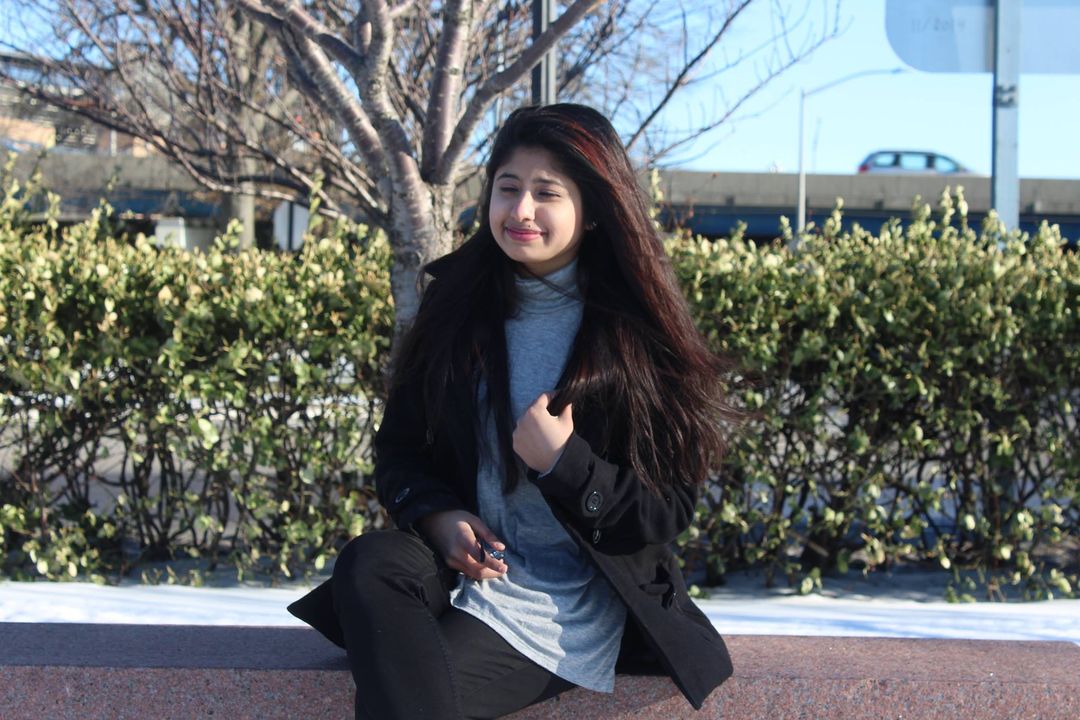
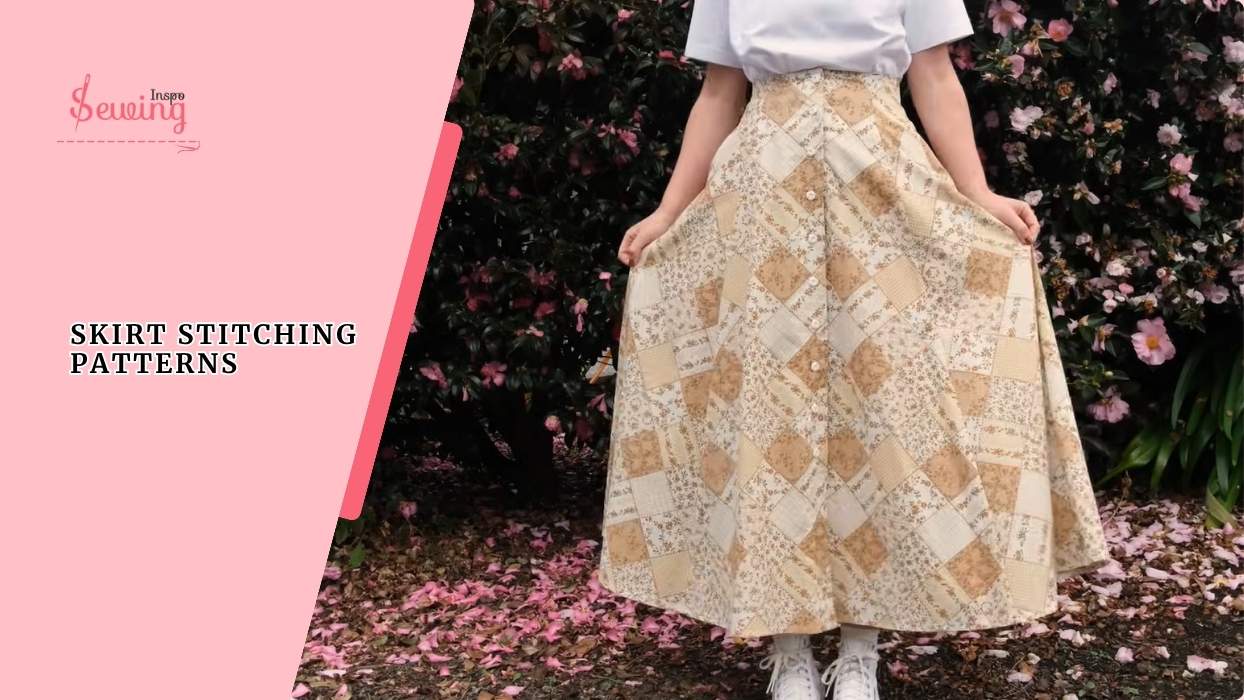
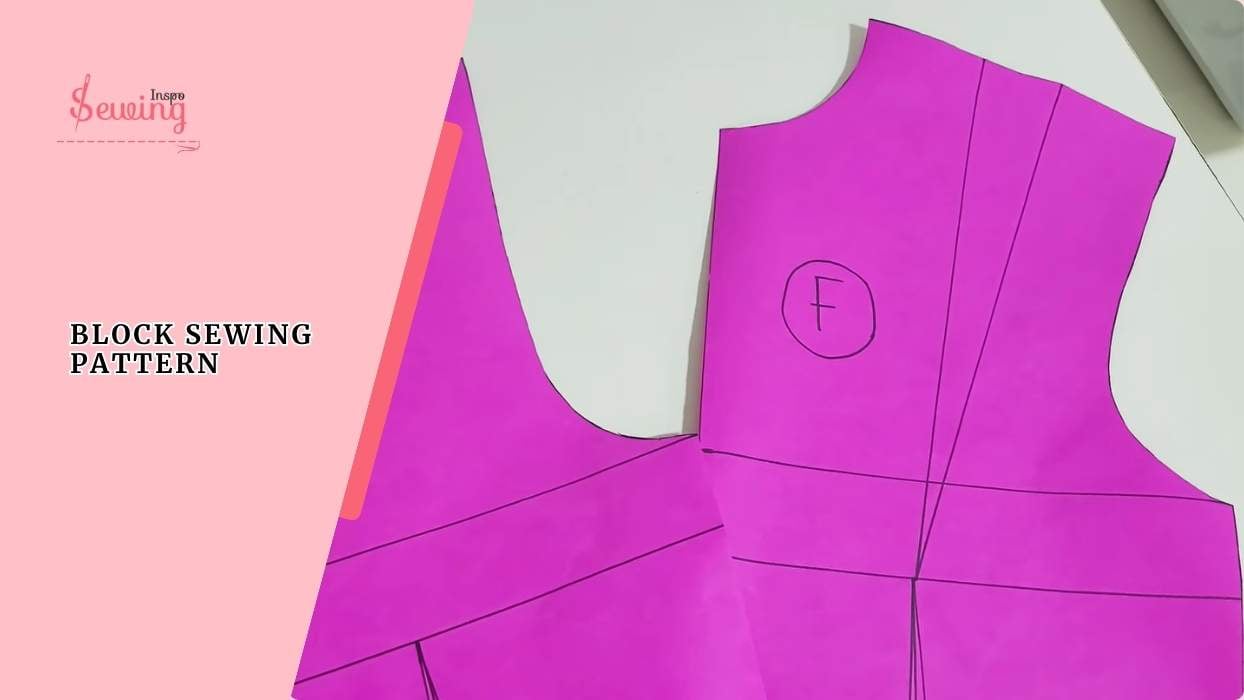
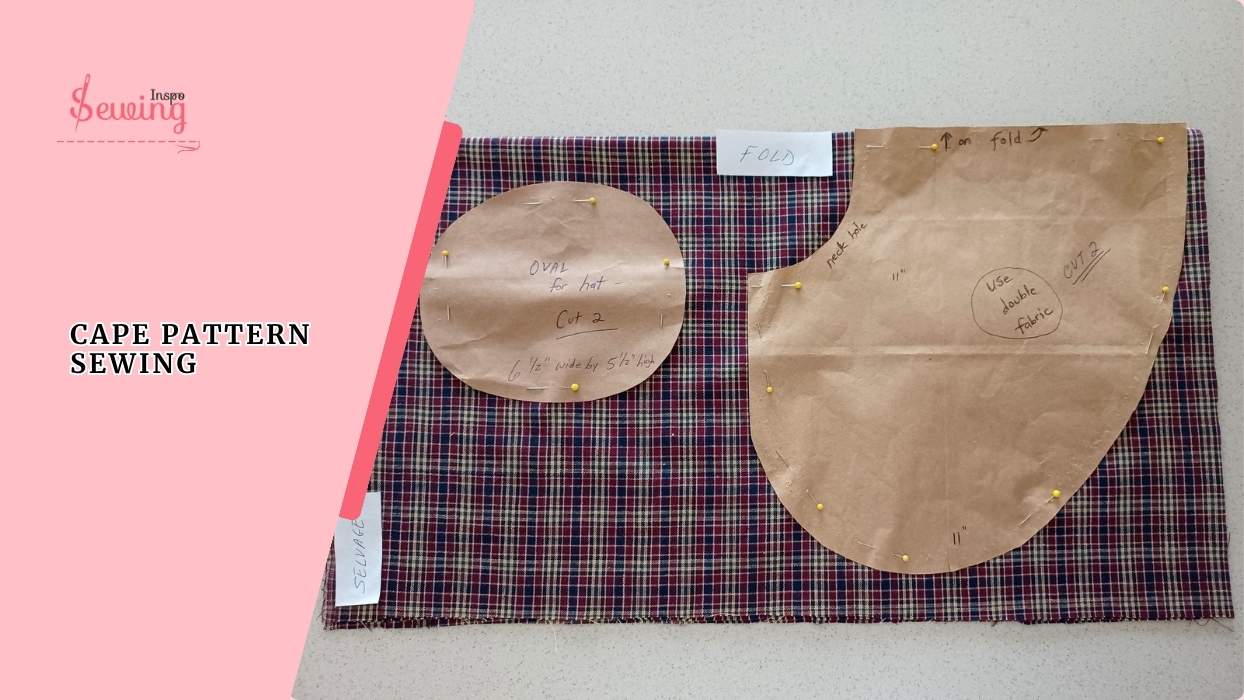
Leave a Reply